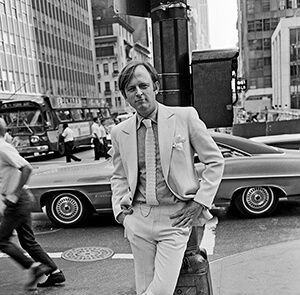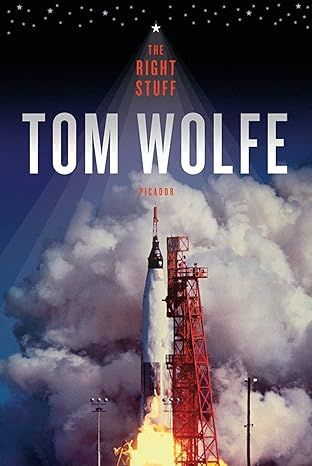
RIGHT STUFF
4.6 out of 5
5,362 global ratings
"Tom Wolfe at his very best" (The New York Times Book Review), The Right Stuff is the basis for the 1983 Oscar Award-winning film of the same name and the 8-part Disney+ TV mini-series.
From "America's nerviest journalist" (Newsweek)--a breath-taking epic, a magnificent adventure story, and an investigation into the true heroism and courage of the first Americans to conquer space. "
Millions of words have poured forth about man's trip to the moon, but until now few people have had a sense of the most engrossing side of the adventure; namely, what went on in the minds of the astronauts themselves - in space, on the moon, and even during certain odysseys on earth. It is this, the inner life of the astronauts, that Tom Wolfe describes with his almost uncanny empathetic powers, that made The Right Stuff a classic.
About the authors
Tom Wolfe
Tom Wolfe (1930-2018) was one of the founders of the New Journalism movement and the author of such contemporary classics as The Electric Kool-Aid Acid Test, The Right Stuff, and Radical Chic & Mau-Mauing the Flak Catchers, as well as the novels The Bonfire of the Vanities, A Man in Full, and I Am Charlotte Simmons. As a reporter, he wrote articles for The Washington Post, the New York Herald Tribune, Esquire, and New York magazine, and is credited with coining the term, “The Me Decade.”
Among his many honors, Tom was awarded the National Book Award, the John Dos Passos Award, the Washington Irving Medal for Literary Excellence, the National Humanities Medal, and the National Book Foundation Medal for Distinguished Contribution to American Letters.
A native of Richmond, Virginia, he earned his B.A. at Washington and Lee University, graduating cum laude, and a Ph.D. in American studies at Yale. He lived in New York City.
Read more
Reviews
RDD
5
A Must-Read for All Spaceflight Enthusiasts!
Reviewed in the United States on May 18, 2021
Verified Purchase
Tom Wolfe’s 1979 book, “The Right Stuff,” chronicles the diverging research of high-altitude rocket planes and spaceflight from the early 1950s through Project Mercury, contrasting the Mercury Seven astronauts with test pilots at Edwards AFB and Naval Air Station Patuxent River, with Chuck Yeager standing out as exemplifying the “right stuff” even though he was not chosen for the space program. Wolfe writes in a somewhat conversational style, working to capture the mentality of test pilots of that era and how it defined what it meant to be a pilot for generations to come, much as Antoine de Saint-Exupéry and others did for pilots of the early twentieth century. Wolfe further evokes the heady emotion of the days of Mercury, when the immediacy of the Cold War turned the Space Race into a battlefront of sorts and the astronauts into Single Combat Warriors to whom the public paid homage. However, Wolfe points out that the test pilots at Edwards were skeptical of the space program, particularly as those running it initially conceived of the pilot as little more than a passenger in a capsule. Meanwhile, the test pilots in the high desert were flying rocket planes to altitudes that required the same skills as a spacecraft, such as control of attitude jets since the air was too thin – or nonexistent – for the plane’s control surfaces to work as the plane had crossed the boundary into space. Despite these achievements, the astronauts captured the public’s imagination and eventually succeeded in using their public positions to regain some of their status as pilots, though the heady days of Mercury did not last into the Gemini and Apollo programs, where spaceflight became more routine as astronauts were longer regaled as Single Combat Warriors.
The style and success of Wolfe’s book ensured its adaptation and Hollywood has done so twice, first in Philip Kaufman’s 1983 film and again in the 2020 television series from National Geographic. This Vintage Classics copy is a nice paperback edition with a great pop-art cover and an introduction from Astronaut Scott Kelly that helps to capture of the legacy of “The Right Stuff.” Something appears to have gone wrong during the formatting process, however, as there are several typographical errors throughout the book (extraneous letters jumbled in the middle of words, words divided by a hyphen as if they were meant to be split between two lines, and multiple instances of the number 1 in place of an “l” or an “I”). These occur often enough to be noticeable, but thankfully Wolfe’s narrative is engrossing and makes up for it.
Read more
9 people found this helpful
Solipso
5
A unabashed look at people involved with America's entry into space.
Reviewed in the United States on September 20, 2011
Verified Purchase
This is a people-oriented look at America's entry into space. It begins with test pilots in the late 1940s and into the 1950s, especially with the guy who broke the sound barrier, Chuck Yeager. Then, after America's space program gets a jolt from the USSR's launching of the Sputnik, the story proceeds through Project Mercury to the last Mercury mission in 1963.
Be advised, Tom Wolfe does not give us a comprehensive account of Project Mercury. The astronauts, their wives, NASA people, Lyndon Johnson, John Kennedy, and a few other characters play roles in the story, and sometimes--particularly regarding the astronauts and their wives--the focus on them is close. But a great amount of material regarding the Mercury missions is omitted or is given only cursory examination. Obviously there is more to the history of America's early space program than the people. Even so, I doubt if the formal history, THIS NEW OCEAN: A HISTORY OF PROJECT MERCURY, includes the information about people that Wolfe includes. I may change my mind after reading THIS NEW OCEAN, but for now I think both books are necessary for a complete picture.
Also be advised, THE RIGHT STUFF is not written in the conventional style of historical narration. Wolfe's style is light and often witty. He uses jargon, colorful figures of speech, and hyperbole. With amazon's "Look Inside" feature, I read the first pages of THIS NEW OCEAN. Its prose is conventional nonfiction, like something found on the front page of a newspaper. Wolfe's prose is like something found in editorial pages or in a breezy novel.
There are no footnotes and no index. In his "Author's Note" at the end, Wolfe provides a brief bibliography.
Many of Wolfe's paragraphs are too long, but this is the only thing I condemn unequivocally as a flaw. For history I do prefer straightforward factual narration, not flippancy, and if I were writing this only to myself, I would consider that flippancy a flaw. Nevertheless, the acclaim this book has received indicates that most other readers are not bothered by Wolfe's style. So you will probably not consider it a flaw.
Though some of Wolfe's details are inaccurate, details are soon forgotten anyway, and for this book I think they are not worth harping about. I give him five stars because of his revealing portrayals of characters. They are accurate enough, I think, and they will be remembered.
P.S. July 30, 2012: I tried reading THIS NEW OCEAN: A HISTORY OF THE MERCURY PROJECT, which is NASA's official history of the Mercury Project. It was tedious, made more so by its lack of a list of abbreviations and an index. Though John Catchpole's PROJECT MERCURY was written with the same matter-of-fact, term-paper prose, it had a list of abbreviations and an index and was more readable. Though I had to work to get it and though I had to pay a steep price for his book, Catchpole at least gave me the information that Tom Wolfe left out.
Read more
3 people found this helpful
Leonard Madia
5
Good read, better between the lines.
Reviewed in the United States on April 30, 2018
Verified Purchase
This is one of the best written books on early space history one can read. The writer uses wit, sarcasm, and the truth to present a pretty factual tale of the people who have “the right stuff”. However it’s important to read the book with a little Skepticism. Mr Wolfe was not beyond bending a yawn just a bit for literary purposes. This is easily illustrated by his handling of the Gus Ghrism Mercury flight and the exploading door controversy. And, to be fair, I don’t think a strick account was the writer’s purpose.
A careful reader should have little trouble looking through the opening provided by Mr. Wolfe at the obvious hypocrisy of that time, and then at the only real sympathetic person in the book, Chuck Yeager. For, it is Mr Yeager who had, and always possessed the “right stuff”; true character and courage in the face of adversity. Indeed according to Wolfe, Yeager took part in the “flying and drinking and driving and drinking” philosophy of the test pilots, but the reader gets the sense that with Yeager there was a bit of restraint. The real issue is that he, Yeager, would be overlooked for the astronaut training program because he did not have the “stuff” according to NASA. This occurred despite the fact that everyone in any area of military flying knew Yeager was the best. He had more than enough of the. “right stuff”.
So, when one reads the book in that manner it becomes a joy. Read it slowly so you are able to soak in the subtle snubs and all the little kicks aimed at NASA, the government, the media, and what would soon be called the establishment. A wonderful example is the then Vice President Johnson’s outrage when Mrs. Glenn would not meet with him prior to her husband’s flight.
To be sure this is a very well written and reasearched book, but even at best it’s just decent history. And, indeed, I don’t believe that was the author’s purpose. If you keep that in mind I believe you will enjoy yourself and perhaps pickup on what I believe the writer is trying to say, who actually has “the right stuff”.
To know and understand the real issue, and in a sense the real tradgey of the book is a much more important then the actual history. For Wolfe presents the “real” history of that time and what really mattered; those who actually possessed the “right stuff”.
Read more
7 people found this helpful
Byron
5
Tom Wolfe wrote the heck outta this
Reviewed in the United States on May 29, 2018
Verified Purchase
This book is about the Mercury Project, NASA’s first manned space missions, and the origins of the astronaut program.
Tom Wolfe was a practitioner of “New Journalism.” The only previous experience that I had with that style was with Hunter S. Thompson’s alcohol-and-other-drugs-fueled escapades in Las Vegas while covering a race for Sports Illustrated and his alcohol-fueled experiences at the Kentucky Derby. Based on those reading experiences, it was my understanding that one of the hallmarks of New Journalism was Journalist-as-Participant. The historical record, however, is pretty clear that a drunk Tom Wolfe had not, in fact, been blasted into orbit with John Glenn or any of the other Mercury 7 astronauts. How then is The Right Stuff an example New Journalism?
Well, Tom Wolfe wrote his butt off. The book reads more “literary” than as an object of traditional journalism. Let me explain…no, there is too much…let me sum up…A traditional journalistic or scholarly book about the early astronauts and “what made them tick” might include quotations from interviews with those astronauts and people that knew them, government officials and news reporters from the time, and maybe a few academics to provide some Authoritative Interpretation. The writer wouldn’t put forth a theory of their own about the astronaut motivations, or, if they did, there’d be a ton of explicit sources backing them up.
Tom Wolfe just puts his theories out there, front and center, and then writes with such force – with repeated interjections, sometimes with exclamations! – and capitalizations and callbacks and pretty descriptions and literary techniques that the reader will forget that they are reading some nonfiction book; this story may be (at least in some sense) true, but it reads like a novel. It never really dives into the minutiae of bureaucratic organization nor is it really interested in any one’s point of view other than that which drives the author’s central point: the astronauts were military test pilots fueled by a Manly Competitive Desire to BE THE BEST and that performing well under pressure in that competition exhibits The Right Stuff (which is never explicitly defined, although I have my own theories).
I am a fan of David Foster Wallace’s writing, and I could see a clear influence from Tom Wolfe’s style in Wallace’s writing. And David Foster Wallace was certainly not the only literary writer influenced by Wolfe. Fans of literature really should check this out, just to trace back certain styles to their creator (or popularizer). Science fiction fans could be inspired by a (more or less) true account of fighter pilot personality and how their influence (or lack thereof) could impact a fictional space program. Fans of nonfiction could see that there are ways of telling a nonfiction story rather than the usual, traditional methodologies. I’d recommend this book to anyone, just with the disclaimer that it is NOT like the usual biographical or documentary-style rendition of the Mercury Project. The writer’s style is definitely noticeable, and some might be distracted by it (or it could just not be to their taste).
Read more
67 people found this helpful
Susan B. Kober
4
The Right Stuff Review
Reviewed in the United States on May 2, 2013
Verified Purchase
When World War Two was over, the American Air force started to work with jet planes. Planes the were faster, more agile, and had more altitude. The Cold War was heating up when in 1957. The Russian launched Sputnik 1 into space. This set the Americans on a small edge. The American government was afraid the Russians would put nuclear weapons in space and launch them at America. So the U.S. decided to start their own space program. Only America wanted to put people in space. The Mercury Project was established and was indented to train and put people in space. The Astronauts were selected based on their aviation history with rocked planes. Then the candidates would be brought to a facility to be tested on to see if they were capable enough to be shot into space(did they have to right stuff). The seven astronauts were selected and mission started. The American space program was slow and by the time one capsule was working the Russians had launched many more. The program was finally successful when Alan Shepard went into space and when John Glenn orbited earth. The book introduces struggles that NASA and America overcame to go to space.
There were many things that I liked about this book. The way the author describes the setting makes you feel as if you were there in the early 1960's with them. I really enjoyed reading this book because it explain a lot of the behind the stage astronaut activity not many know about. I was very interesting to learn about the tests and struggles the pilots had to go through to became astronauts. One of the only things that I didn't like about the book was the fact that the "story" did not really carry out. The book only focused on a six year period from 1957-63. There is no doubt in my mind that these were very significant years in the space race, but the book didn't mention the moon landing I really did enjoy this book though. There were not really any themes or messages in this book because it was a non-fiction book.
If anyone is interested in space of history this would be a great book for them. Since this boo;k is about the space race it is focused on America's retaliation to Russia's launch of Sputnik 1. This book is about America building a space program and trying to bet Russia to space. If you ire into history this would also be a good book for you. This book is filled with historical information. The book takes place in 1957-1963. During the Cold War many historical space events occurred. The heat was on as Russia and America went heat to head in a battle for the stars. So if your into history or space, This would be a great book for you.
Read more
2 people found this helpful
Best Sellers
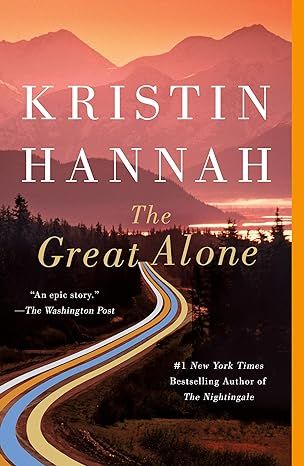
The Great Alone: A Novel
4.6
-
152,447
$5.49

The Four Winds
4.6
-
156,242
$9.99

Winter Garden
4.6
-
72,838
$7.37

The Nightingale: A Novel
4.7
-
309,637
$8.61

Steve Jobs
4.7
-
24,596
$1.78

Iron Flame (The Empyrean, 2)
4.6
-
164,732
$14.99
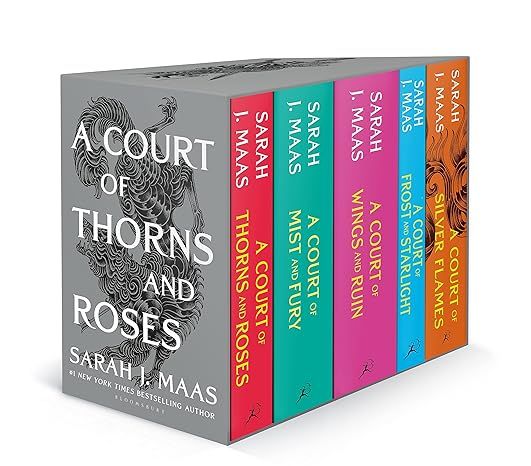
A Court of Thorns and Roses Paperback Box Set (5 books) (A Court of Thorns and Roses, 9)
4.8
-
26,559
$37.99

Pretty Girls: A Novel
4.3
-
88,539
$3.67
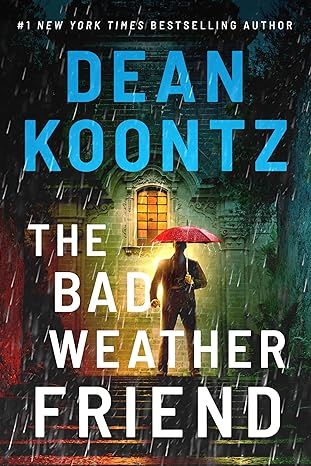
The Bad Weather Friend
4.1
-
34,750
$12.78

Pucking Around: A Why Choose Hockey Romance (Jacksonville Rays Hockey)
4.3
-
41,599
$14.84
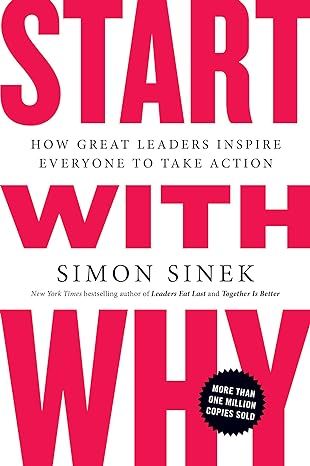
Start with Why: How Great Leaders Inspire Everyone to Take Action
4.6
-
37,152
$9.99
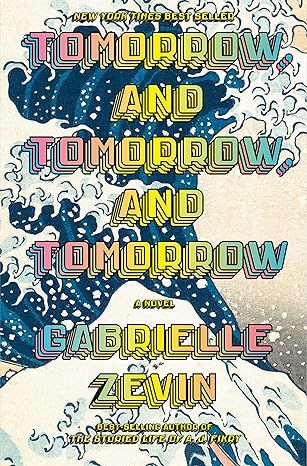
Tomorrow, and Tomorrow, and Tomorrow: A novel
4.4
-
95,875
$13.99
